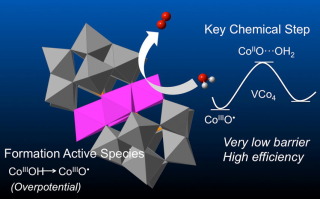A mechanism of water oxidation catalyzed by the carbon-free tetra-Co containing polyoxometalates [Co4(H2O)2(PW9O34)2]10− (PCo4) and [Co4(H2O)2(VW9O34)2]10−(VCo4) is elucidated by DFT calculations. Computational analysis for PCo4 suggests that a first PCET step may proceed via a sequential electron-then-proton transfer (ET + PT) pathway and leads to one electron oxidize species S1 (POM-CoIII





